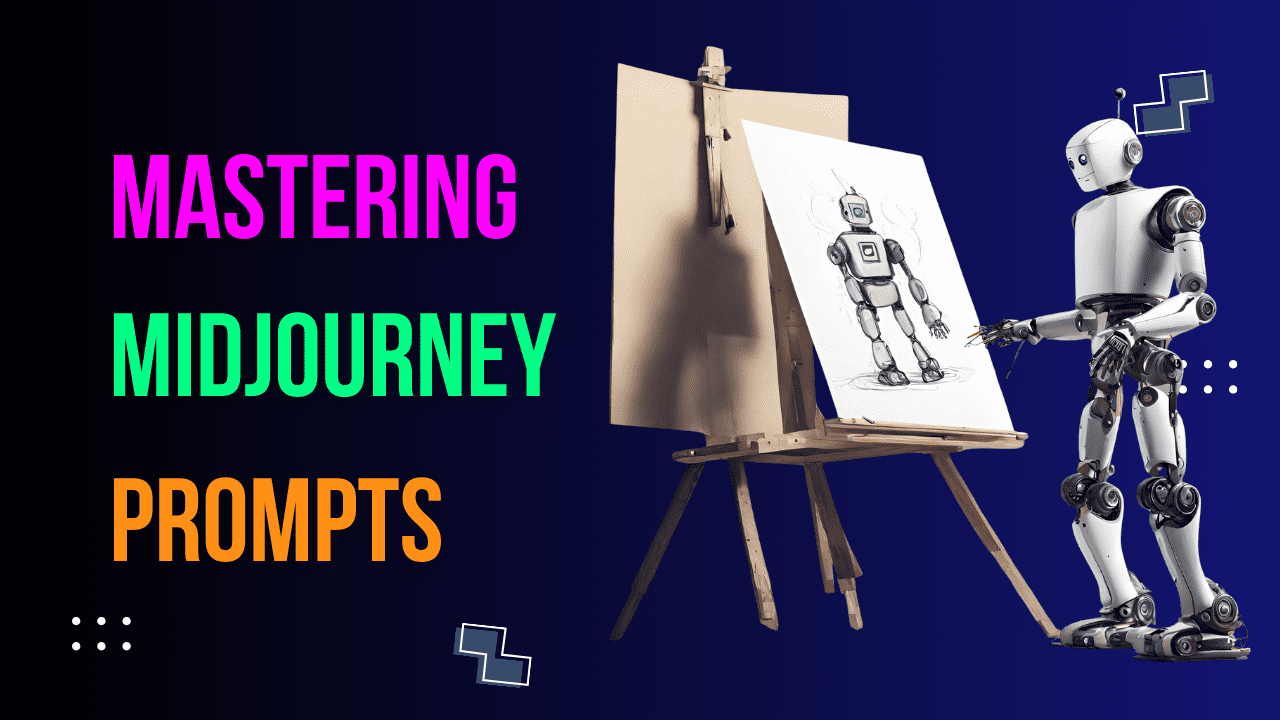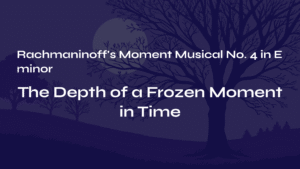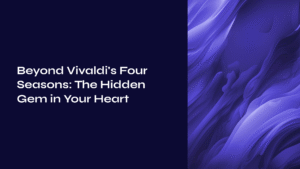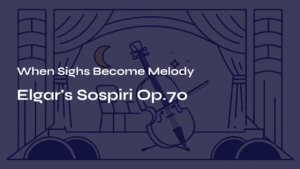Table of Contents
Things to consider when creating a prompt
Once you have a mental image of the message you want to create, it’s time to put it down on a midjourney prompt. But if you’ve done it before, you know that getting the image in your head onto paper isn’t as simple as it sounds.
What if you can’t think of a Midjourney Prompt idea?
Your prompt does not have to be a phrase; it can just be a list of words, separated by commas or spaces.
But if you’re still having trouble putting the hazy picture in your brain into words, try writing it down and answering the questions below in order. Then just copy and paste it into a ready-to-use prompt.
- What is the subject? Portrait, animal, or landscape?
- What would you like to draw? Photo? Painting?
- Where is the space? Indoors, outdoors, underwater, or in space?
- How is the light and lighting? Soft light, direct sunshine, backlight, or neon?
- How about the colors? Bright, soft, dark, pastel, or harsh colors?
- How do you see the situation? Are you staring directly ahead, to the side, or from the side? From above?
- What is the background? Solid color? City? Sea?
- What is the style? 3D, 2D, artwork, poster or flyer?
Have you tried responding to each of these questions in turn? Let us look at an example.
First, I want a lovely puppy and a youngster, with a green garden background, a rear view, and an oil painting style.
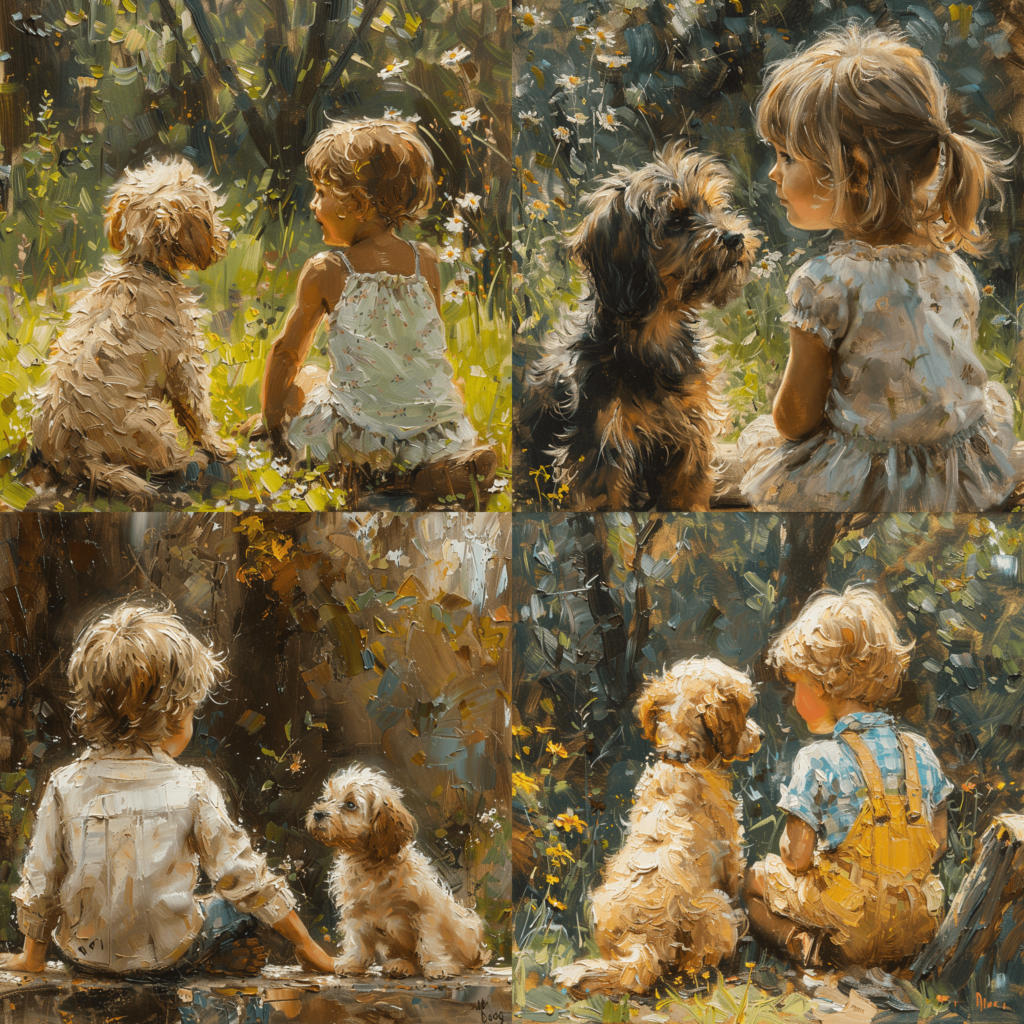
What are your thoughts? You may add or delete as many prompts as you like, and that is what you’ll learn as you go: how to build a picture that works for you.
Creating your Midjourney Prompt
When creating a prompt, the first thing you should jot down is the subject. I put out what I want to show as the main subject of the photograph. It might be a person, an animal, a plant, a location, food, scenery, transportation, or any number of other things. If the thing is particular, you can write down a name noun to describe it. If it is not explicit, you should put down a prompt, which is a collection of sentences or words that explain it.
It’s a good idea to try expanding your prompt from a single word to one or two adjectives or adverbs that describe it.
For example, writing a girl results in an indeterminate amount of photos of girls. Let’s make this more specific: A black-haired girl. This time, the picture of a girl with black hair emerges. A black-haired girl with blue eyes. This will produce a picture of a girl with black hair and blue eyes. Wearing sunglasses will result in the picture of a female wearing sunglasses. This allows you to choose your clothing, haircut, accessories, and even stance.
Conclusion
This is the fundamental explanation behind the Midjourney prompt. In the next section, you’ll learn how to arrange and use prompts, as well as the many sorts of prompts available. I advise you to take it easy at first, thinking, “This is how things are intended to be. You’ll be able to follow along with the steps and utilize them to create the images you wish to draw.
Discover More
If this article made you happy and taught you something, I’m sure our next article will do the same for you. Each piece is carefully written to help you understand things better and enjoy reading more. So, to keep exploring and having fun, just click on this link to go to our next story.
Stylize in Midjourney: Turning Text into Artistic Imagery – ReViewMaster DEN (rvmden.com)
What is DALL-E 3? – Comparison of DALL-E and Midjourney Images – ReViewMaster DEN (rvmden.com)
